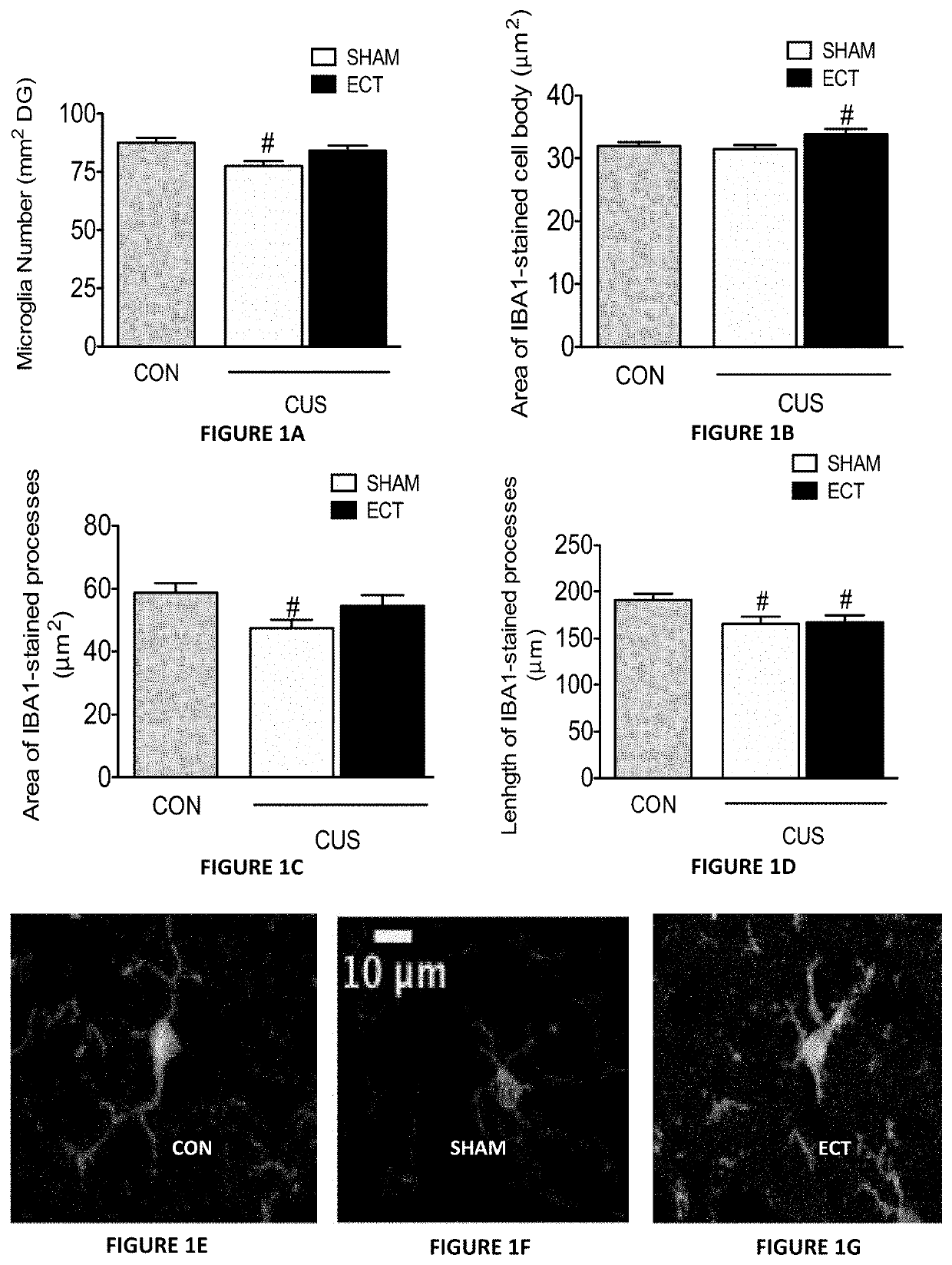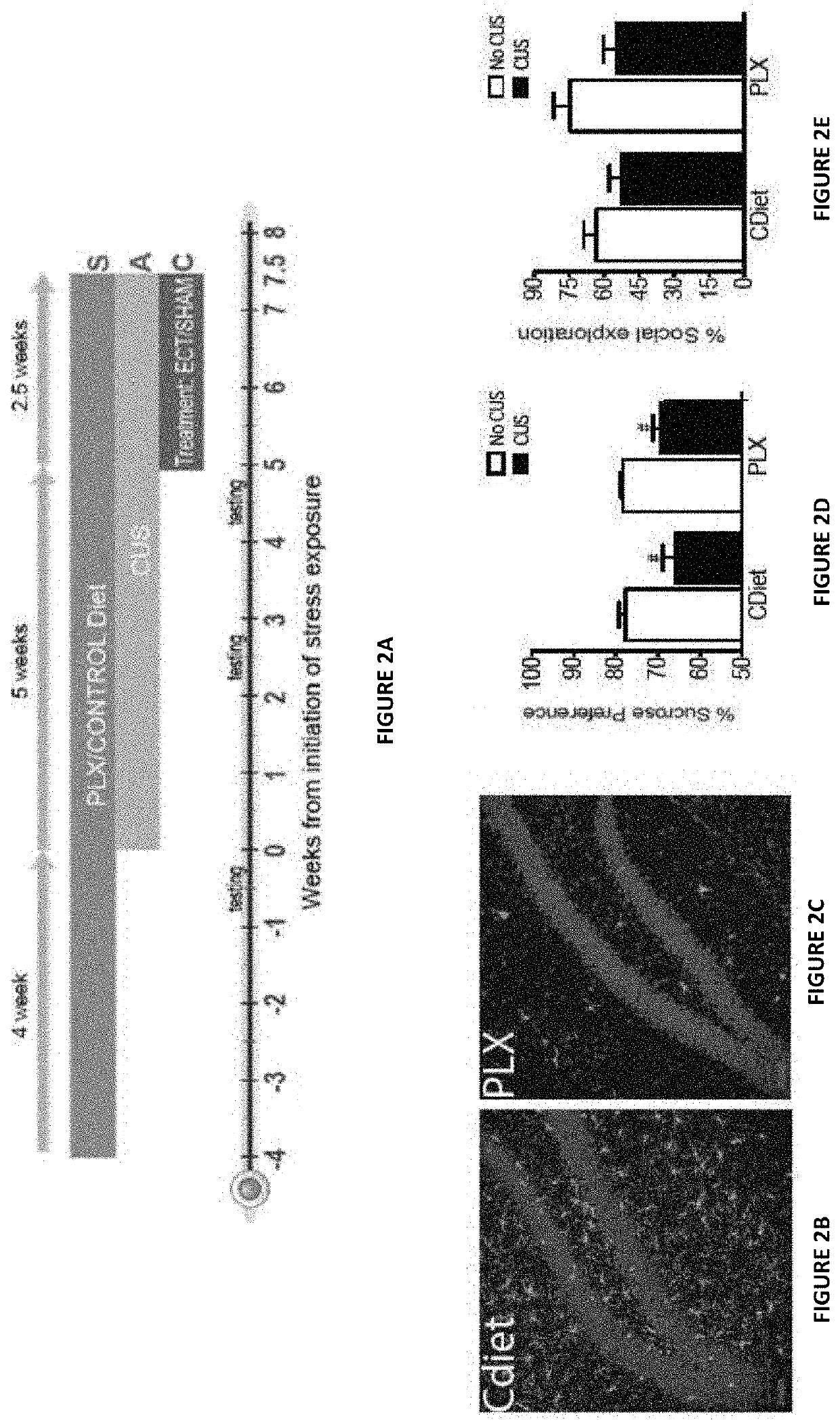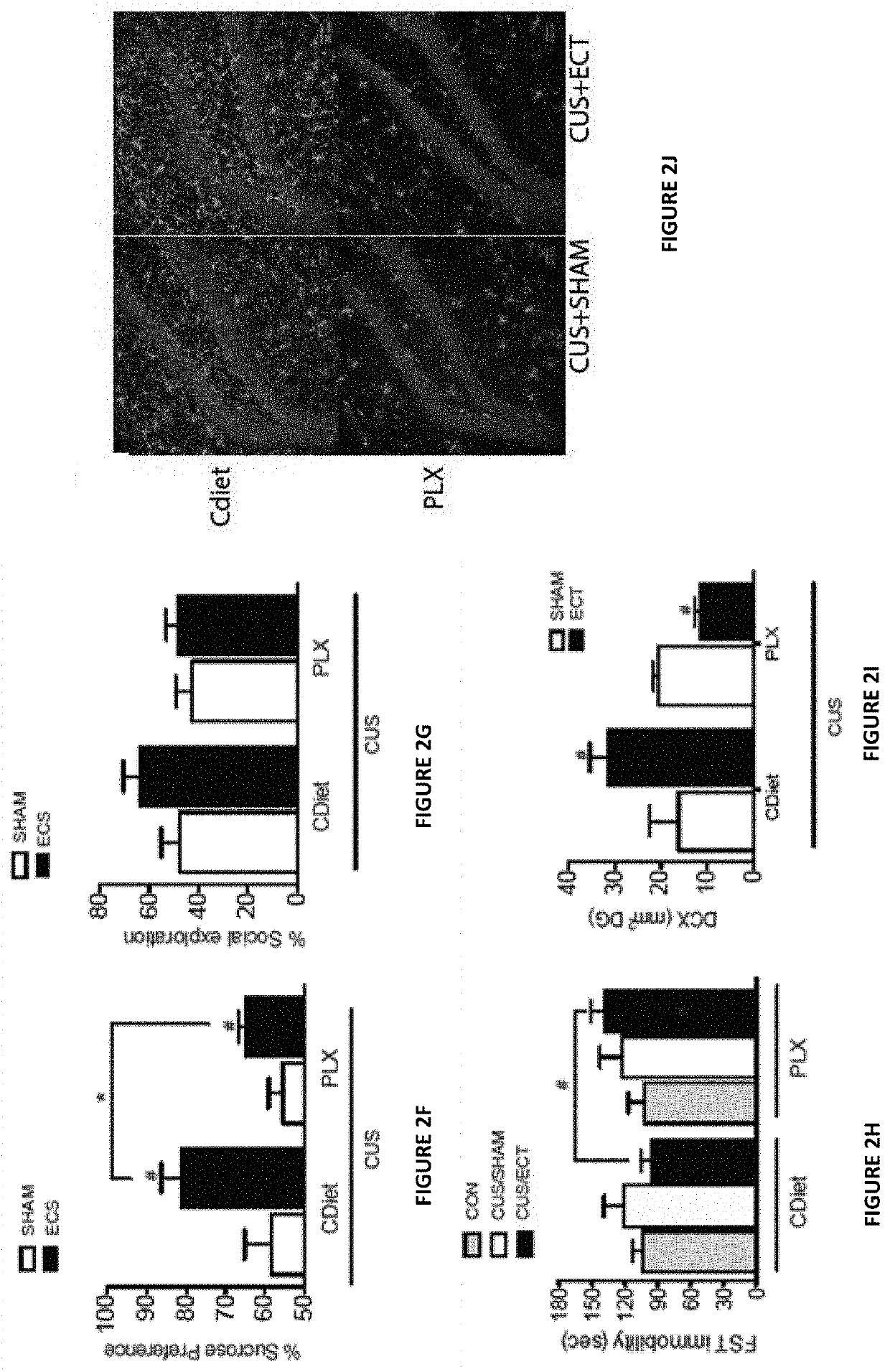Microglia modulators for use in treatment of depression
a technology of microglia and modulator, applied in the field of neuropharmacology, can solve the problems of limited effect of ssris, the most popular class of antidepressant drugs, and impede the development of effective preventive and therapeutic procedures, and achieve the effects of improving the safety and safety of patients, reducing the risk of infection, and improving the safety of patients
- Summary
- Abstract
- Description
- Claims
- Application Information
AI Technical Summary
Benefits of technology
Problems solved by technology
Method used
Image
Examples
example 1
ECT Increases the Number and Size of Microglia in CUS-Exposed Mice
[0209]The inventors first assessed the effects of ECT on microglial morphological activation status following exposure to chronic unpredictable stress (CUS)—according to an established model in mice. While previous studies showed that ECT affects the morphology of microglia cells in normal mice (Jansson et al., 2009), the effects of ECT on microglial morphology in chronically stressed, “depressed-like” mice were not shown. The inventors analyzed the morphometric changes in hippocampal dentate gyrus (DG) microglia of mice exposed to five weeks of CUS followed by 2.5 weeks of ECT or SHAM treatment (in the latter, mice were anesthetized and connected to the stimulating electrodes, but no current was passed). The inventors' analysis revealed significant CUS-induced reductions in the number of microglia in the DG of SHAM-treated mice, as compared to non-stressed controls. This reduction was reversed by ECT (FIG. 1A). ECT-t...
example 2
Depletion of Brain Microglia Blocks the Anti-Depressive Effects of ECT
[0210]To examine whether the effects of ECT on microglia are relevant to the anti-depressive effect of this procedure, the inventors examined the effects of ECT in mice with near-complete microglia depletion (FIG. 2A). Depletion was induced by a three weeks exposure to a diet containing PLX5622—an antagonist of the receptor for CSF-1 (which is essential for microglial survival). Control animals received the same diet without PLX5622 (CDiet). This procedure resulted in near-complete depletion of all brain microglia, including microglia in the hippocampus (FIGS. 2B-2C). The microglia depletion did not cause any depressive-like symptoms by itself. Specifically, it did not reduce sucrose preference (a measure of anhedonia) (FIG. 2D) or social exploration / activity (another common depressive symptom) (FIG. 2E) or the immobility in the forced swim stress (a measure of despair) (FIG. 2H—two left columns). The microglia de...
example 3
ECT Anti-Depressive Effect Involves Regulation of Inhibitory Immune Checkpoints Transcription
[0211]To elucidate the potential mechanisms underlying the anti-depressive effect of ECT in CDiet mice and its attenuation in the PLX-treated mice, the inventors explored the group differences in transcriptional regulation in the hippocampus, which is known to be involved in regulation of emotional and cognitive processes, as well as in mediating the therapeutic effects of ECT. RNA sequencing analysis revealed that in the CUS-exposed (depressed-like) CDiet groups, a total of 15 hippocampal transcripts were modulated by ECT. These genes were significantly differentially regulated between the SHAM vs. ECT mice, with 8 genes showing down-regulation, and 7 showing up-regulation (q<0.32, with a cutoff of ±1.3-fold change; table 1). Remarkably, in the PLX-treated groups no genes were differentially regulated between CUS-exposed SHAM vs. ECT mice, demonstrating that the effects of ECT on gene trans...
PUM
| Property | Measurement | Unit |
|---|---|---|
| pH | aaaaa | aaaaa |
| time | aaaaa | aaaaa |
| diameter | aaaaa | aaaaa |
Abstract
Description
Claims
Application Information
 Login to View More
Login to View More - R&D
- Intellectual Property
- Life Sciences
- Materials
- Tech Scout
- Unparalleled Data Quality
- Higher Quality Content
- 60% Fewer Hallucinations
Browse by: Latest US Patents, China's latest patents, Technical Efficacy Thesaurus, Application Domain, Technology Topic, Popular Technical Reports.
© 2025 PatSnap. All rights reserved.Legal|Privacy policy|Modern Slavery Act Transparency Statement|Sitemap|About US| Contact US: help@patsnap.com



